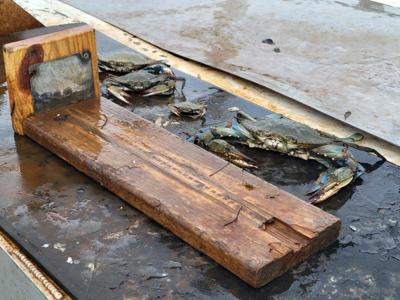MARYLAND- The 2025 Chesapeake Bay Blue Crab Winter Dredge Survey estimates the bay’s blue crab population at 238 million, a significant decline from last year’s 317 million and the second-lowest count in the survey’s 35-year history.
Conducted jointly by the Maryland Department of Natural Resources and the Virginia Institute of Marine Science, the survey recorded declines across all age groups of crabs — adult males, spawning-age females, and juveniles. The juvenile count fell to 103 million, the third-lowest on record and part of a troubling trend of six straight years of below-average juvenile recruitment.
“We saw a very high mortality rate among blue crabs this winter, likely due to several cold snaps,” said Mandy Bromilow, Maryland’s blue crab program manager. “With the results of the stock assessment next year, we hope to have more insight on what could be contributing to the ongoing low juvenile recruitment and what we can do to support the Chesapeake Bay’s blue crabs. Until then, we need to maintain caution in our management approach for blue crabs.”
The winter dredge survey, which takes place from December through March, samples 1,500 sites across the bay. Biologists use dredge equipment to capture, measure, record, and release crabs, building a comprehensive picture of the crab population’s health.
This year’s spawning-age female crab estimate is 108 million, down from 133 million in 2024. While that figure remains above the management threshold of 72.5 million, it is still below the target of 196 million. Adult male crabs also saw a steep drop, from 46 million last year to 26 million in 2025.
The Chesapeake Bay blue crab fishery is known for its boom-and-bust cycles, with population swings driven by changes in water temperature, habitat, and predation — particularly by invasive species like the blue catfish. The upcoming stock assessment, expected in spring 2026, will examine these and other factors such as hypoxia and habitat loss.
The last major stock assessment in 2011 led to changes that helped revive the struggling blue crab fishery. State scientists are hopeful that this new review will provide the data needed to ensure sustainable management in the future.







